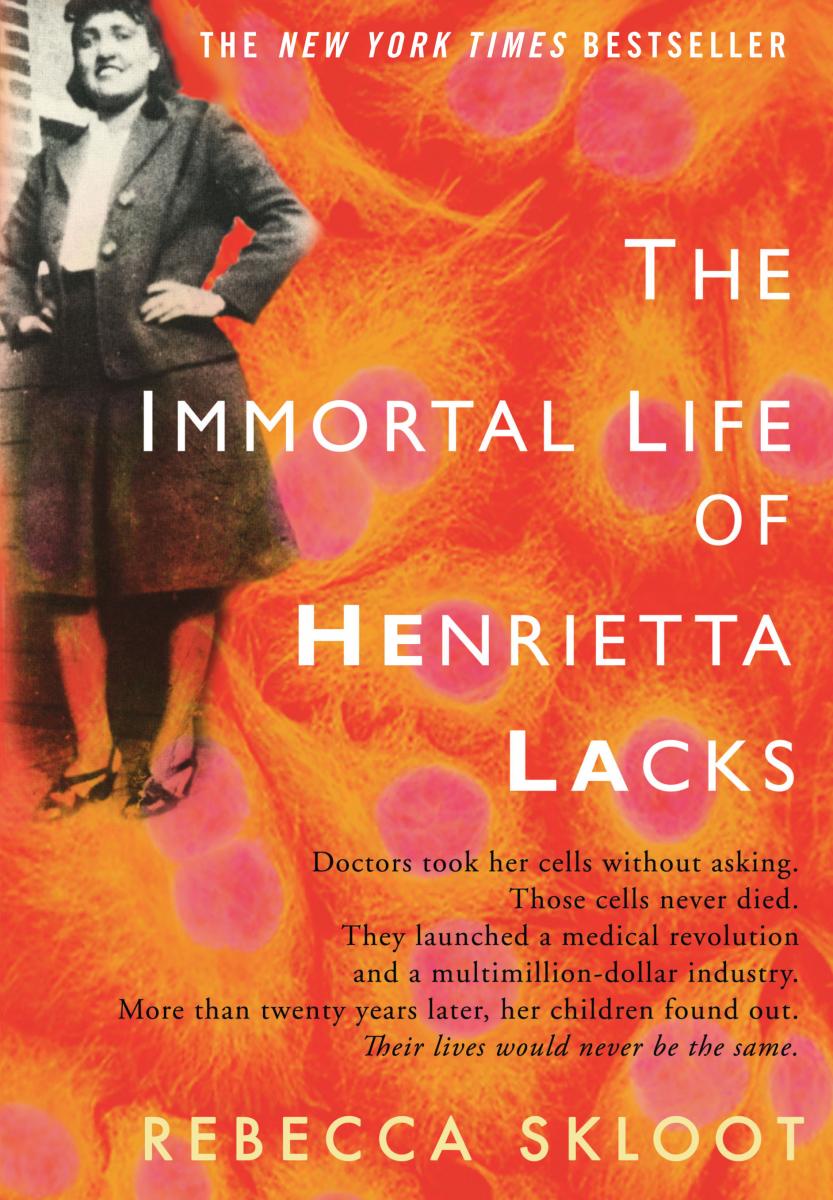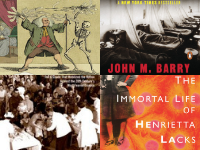The spring 2019 issue of Pennslvania Legacies focused on the history of public health in the Keystone State. Want to learn more? Check out some books and online resources exploring the history of epidemics and medical breakthroughs—both in Pennsylvania and throughout the United States.
These book reviews and online resources were published in the spring 2019 issue of Pennsylvania Legacies (vol. 19, no 1): Epidemics and Public Health in Pennsylvania.
Book Reviews
by Maureen Iplenski

The Contagious City: The Politics of Public Health in Early Pennsylvania
By Simon Finger
Ithaca, NY: Cornell University Press, 2012
Simon Finger explores a period in which disease loomed large in Philadelphians’ minds. Swarms of mosquitoes spread yellow fever throughout its swampy enclaves. Cholera-contaminated water spewed from the faucets of its homes. Plumes of thick black smoke flowed from nearby factories, and trash overcrowded the streets. Ironically, William Penn, aspiring to create a city free from the disease and disasters of 1660s London, had imagined Philadelphia as a country-like environment with open and airy streets. Finger explores how this vision died and how the city adapted to its booming population and recurrent outbreaks of sickness. Some Philadelphians blamed immigrants, who often entered aboard crowded and filthy ships, for spreading disease. This inspired Philadelphia officials to establish a Lazaretto, the first quarantine hospital in the United States. Inspired by miasma theory, the city government pushed butchers (and their businesses’ foul odors) to the outskirts of town. Finger tracks the vigorous public debates between “contagionists” and “anticontagionists” and the establishment of the College of Physicians of Philadelphia, which aimed “to advance the science of Medicine, and thereby lessen human misery.” In this work, Finger effectively communicates the connection between medical knowledge, disease, and urban politics.

Polio: An American Story
By David Oshinsky
New York: Oxford University Press, 2005
Although a work of historical nonfiction, Polio: An American Story reads like a novel in which David Oshinsky guides readers through the nearly 50-year quest to eradicate poliomyelitis. Early in this pursuit, John D. Rockefeller founded the Rockefeller Institute for medical research, headed by Simon Flexner, whose misguided theories delayed the discovery of a polio vaccine. President Franklin D. Roosevelt’s polio diagnosis spurred support for a nationwide eradication campaign, the “March of Dimes.” In 1934, his friend Basil O’Connor organized “President’s Birthday Balls” in cities across the country at which each attendee made a small donation. In 1938, radio host Eddie Cantor urged the American public to send their spare dimes directly to the White House. By the 1950s, a lively debate emerged between Jonas Salk, who supported a killed-virus vaccine, and Albert Sabin, who supported a live-virus vaccine. Although controversial, Salk’s killed virus was eventually dispersed to the public, to the relief of thousands of children and their families. Oshinsky’s Polio is not just a story about the toll that polio has taken; it is a story about the generosity of the public and the determination to find a cure.

The Great Influenza: The Epic Story of the Deadliest Pandemic in History
By John Barry
New York: Penguin Books, 2005
In The Great Influenza: The Epic Story of the Deadliest Pandemic in History, John Barry presents readers with a library of information. Over the course of two years, the Great Influenza (1918–19) killed more individuals across the world than the bubonic plague had in a century. Those who were completely healthy one day were at risk of falling deathly ill the next. In such cities as Philadelphia, priests went house to house, urging residents to open their doors and hand off the bodies of their deceased loved ones. Influenza tore through cities, causing its victims to endure violent coughing spasms, bleeding from the ears, and pounding headaches that felt as if “someone were hammering a wedge into their skulls.” However, to learn such vivid details about the Great Influenza, readers must slog through over 100 pages of American medical history, intertwined with an examination of America’s wartime politics. These details that so perfectly express the magnitude of the influenza epidemic are hidden within chapters that primarily focus on such topics as philosophy of Galenic medicine, the rising competition between European and American medical schools, the establishment of Johns Hopkins University, the United States’ involvement in World War I, and the implementation of the Sedition Act. Although these events hold great significance in American history, they seem to overshadow the importance of the 1918 influenza epidemic.

The Immortal Life of Henrietta Lacks
By Rebecca Skloot
New York: Random House, 2010
Henrietta Lacks was a poor African American woman from rural Virginia. She fell ill shortly after her 30th birthday and was diagnosed with squamous cell cancer, which proved fatal. While at the Johns Hopkins Hospital, Lacks withstood multiple tests and treatments. Prior to her death, her cervical tissue was sent to the lab of Dr. George Gey, a cell biologist, and covered in several drops of culture medium. To the surprise of everyone in the lab, these cells grew with “mythological intensity.” Discovering a method to isolate a specific cell and repeatedly divide it, Gey created the world’s first immortal cell line, now known as HeLa. Soon enough, scientists from across the globe yearned to experiment with HeLa cells. HeLa cells were used to prove the Salk polio vaccine effective. Russian and American scientists grew them in space to study the effects of space travel. It’s even thought that they could lead scientists to a cure for cancer. Despite her significant role in the scientific community, Lacks’s family did not learn about their relative’s immortal cell line—or the fact that HeLa cells were being sold commercially throughout the medical community—until 24 years after her death. Author Rebecca Skloot delves into HeLa’s importance within the medical community, but she also shares the story of the person and family behind the cell line, effectively capturing the emotional turmoil the Lackses withstood.
Leg@cies: Interesting Places to Explore on the Web
In this online exhibit, the Smithsonian Museum of American History not only chronicles over 200 years of polio history but also explores polio’s medical, scientific, and cultural legacies as it spurred advances in disability rights, rehabilitation medicine, assistive technology, and immunization. Through historical images and documents, timelines, interactive activities, and audio clips, the site outlines polio’s reign of terror in 20th-century America and continuing efforts to eradicate the disease worldwide.
Developed by the College of Physicians of Philadelphia, one of the oldest medical societies in the United States, this interactive resource aims to increase public knowledge of the development of vaccinations, their role in the improvement of human health, and the controversies surrounding vaccination by presenting an archive of sketches, photographs, and videos, an interactive timeline stretching over 1,000 years, educational activities, and academic articles. Users may study the development of the HIV vaccine, the practice of inoculation, and the evolution of viruses while exploring a library of additional information.
Philadelphia’s yellow fever epidemic of 1793 had political as well as medical implications. In newspapers and pamphlets, leading doctors and politicians fiercely debated the cause and treatment of the disease as well as ways to prevent further outbreaks. Through documents, images, and artifacts, this exhibit by the US National Library of Medicine encourages users to explore how different groups of people responded to the epidemic and used it to advance their agendas. Resources include a digital gallery on efforts to combat mosquito-borne illnesses in the 1800s and 1900s and lesson plans for middle-school and undergraduate students.
Labeled an “object group,” the Antibody Initiative is actually a robust interactive online portal that uses over 1,000 objects in the National Museum of American History’s collections to explore the history of vaccines, serums, antitoxins, diagnostics, and other antibody-based therapies. Topics range from the first smallpox vaccinations to the development of tests for typhoid and syphilis to rabies treatments. Through this exhibit and its related glossaries, animations, and explainers, the Smithsonian aims to share how antibodies have transformed medical history.
Maureen Iplenski is an intern in the Programs and Services Department at HSP and an undergraduate at Temple University pursuing a degree in history along with a minor in communication studies.

